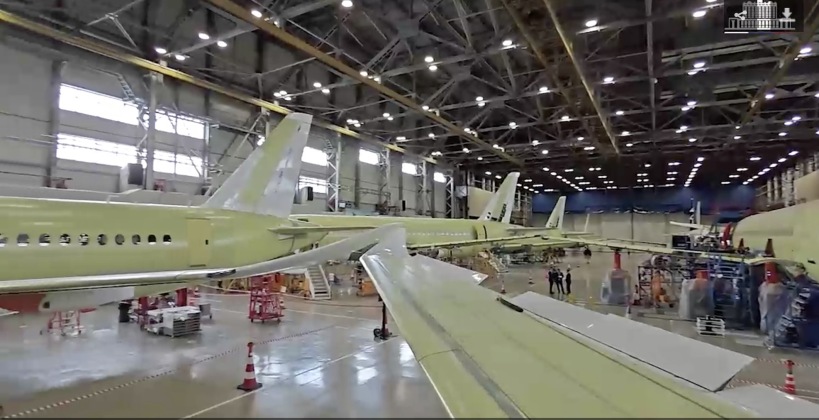News
Future of North Korean Aviation in Russia Kim Jong Un Tours Plants Producing Su-35 and Su-57 Fighters and SSJ-100 Airliners
North Korean leader Chairman Kim Jong Un visited the Komsomolsk-on-Amur aviation plant on September 15, where accompanied by Russian Trade and Industry Minister Denis Manturov he closely inspected production lines and aircraft on display. Located in the Russian Far East, the aviation plant is the largest in Russia and produces the country’s two most advanced classes of tactical combat jet the Su-35 and Su-57 heavyweight fighters. Both are currently in serial production to meet Russian Defence Ministry orders. Chairman Kim closely observed a training model of Russia’s Su-57 fifth generation fighter, and watched a Su-35 perform aerobatics outside the factory. The visit came at a time of expanding defence cooperation between Russian and North Korea, and follows years of unverified reports from South Korean sources that the north is interested in acquiring Su-35 fighters from Russia. Both countries operate their fighters similarly as auxiliaries to ground based air defence networks, in contrast to China, South Korea and the United States which rely on fighters for the bulk of air defence duties. This makes Russian fighters well suited to how North Korea already utilises its aviation assets.

Manned combat aviation remains one of the few areas where North Korea’s large defence sector is unable to produce for its own needs, with the country having been unable to acquire new Russian fighters since the early 2000s due to the imposition of arms embargoes by the UN Security Council. As Russia faces escalating conflict with the Western Bloc, there is a possibility that it could seek to find means of working around the embargoes. Possibilities include deploying Russian personnel with any fighters delivered to claim that they are Russian aircraft based in North Korea as part of a jointly operated unit, which would technically not be an export, or else even basing a Korean fighter unit on Russian territory. Both the Su-35 and Su-57 having very long ranges allowing them to operate across East Asia from bases in the Russian Far East, which would make the latter option a possibility. While North Korea is considered capable of paying for new fighter squadrons, however, it remains uncertain whether it would seek to invest in such aircraft rather than in indigenous assets such as air defence systems which may be considered more cost effective. The degree to which Russia is willing to violate UN Security Council Sanction also remains in question.

Chairman Kim also observed the final assembly shop for SSJ-100, otherwise known as the Sukhoi Superjet 100, which is currently in production for Russian civil airliners. Although the aircraft is considered less advanced than its counterparts produced in China, the United States and Europe, North Korea’s continued reliance on older Tu-204 airliners, a late Soviet era design, means acquisitions of SSJ-100 airliners would still represent an improvement to its fleet. The country’s flag carrier airliner Air Koryo could use the aircraft to replace its Tu-204 and Il-62M aircraft, with the newer Sukhoi jet reportedly having significantly lower operational costs. The older aircraft currently in service have notably been extensively refurbished with modern interiors, although the age of their airframes still imposes some limitations on Korean operations. The barriers to supplying civilian airliners would notably be significantly lower than those to supplying fighter planes, with Russia representing the only likely supplier of new aircraft to North Korea.












